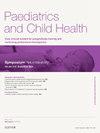发展性和癫痫性脑病:临床方法的调查和管理
Q3 Medicine
引用次数: 0
摘要
癫痫性脑病(EE)和发育性和癫痫性脑病(DEE)是一组严重的脑部疾病,其中癫痫性放电导致进行性精神运动功能障碍。这些疾病包括罕见但重要的疾病,如新生儿癫痫性脑病、韦斯特综合征、德拉韦综合征、伦诺克斯·加斯托综合征和朗道·克莱夫纳综合征。这些情况导致临床、脑电图和病因特征的特征集群,这些特征共同帮助我们了解这种情况,使用更有针对性的治疗方法,并预测随着年龄的增长病情的进展。脑电图(EEG)是确定癫痫综合征病因的关键。由于下一代测序的可用性,基因检测在特定综合征的诊断中越来越重要。来自医疗、护理和治疗团队的多学科支持对于帮助这些儿童发挥其最佳能力和技能并优化其长期结果至关重要。在本文中,我们描述了一些更常见的EE/DEE,并讨论了这些疾病的管理和预后。本文章由计算机程序翻译,如有差异,请以英文原文为准。
Developmental and epileptic encephalopathies: the clinical approach to investigation and management
Epileptic encephalopathies (EE) and developmental and epileptic encephalopathies (DEE) are a group of severe brain disorders in which epileptic electrical discharge contributes to progressive psychomotor dysfunction. These include rare but important conditions such as neonatal epileptic encephalopathy, West, Dravet, Lennox Gastaut and Landau Kleffner syndromes. These conditions result in a characteristic cluster of clinical, EEG and aetiological features which together, help us understand the condition, use more targeted therapies and prognosticate with regards to progression with age. Electroencephalography (EEG) is crucial in determining the causative epilepsy syndrome. Since the availability of next generation sequencing, genetic testing has assumed increasing importance in the diagnosis of specific syndromes. Multidisciplinary support from medical, nursing and therapy teams is essential in helping these children reach the best of their abilities, skills and to optimize their long-term outcomes. In this article we describe some of the more commonly seen EE/DEE and discuss management and prognosis of these.
求助全文
通过发布文献求助,成功后即可免费获取论文全文。
去求助
来源期刊

Paediatrics and Child Health (United Kingdom)
Medicine-Pediatrics, Perinatology and Child Health
CiteScore
1.20
自引率
0.00%
发文量
70
 求助内容:
求助内容: 应助结果提醒方式:
应助结果提醒方式:


